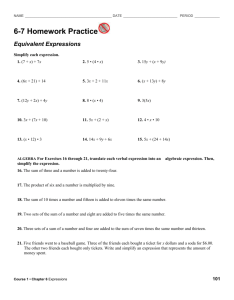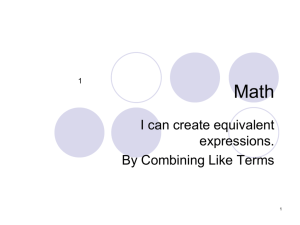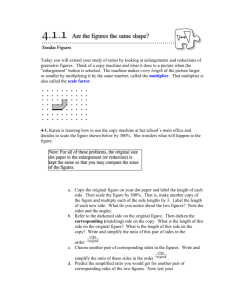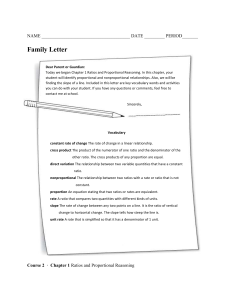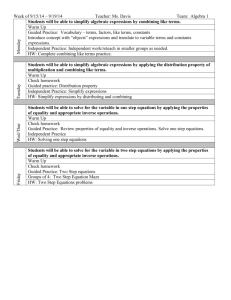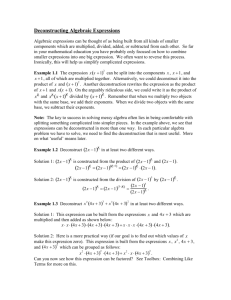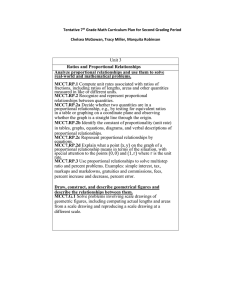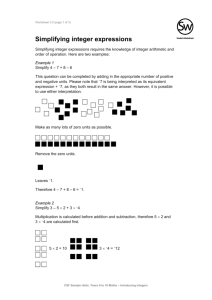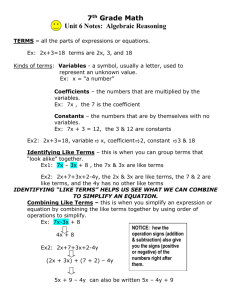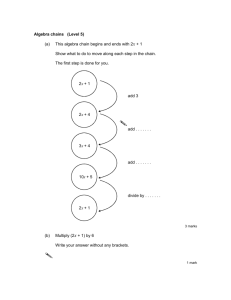Chapter 4 Definitions 1.) Algebraic Expression – A combination of
advertisement
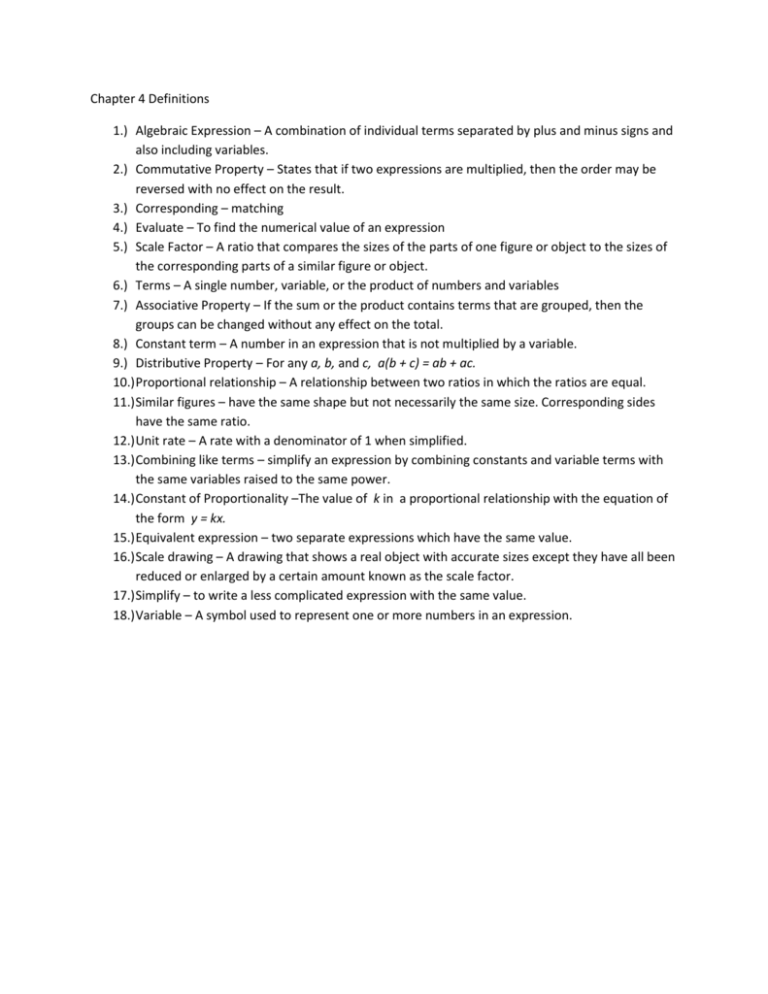
Chapter 4 Definitions 1.) Algebraic Expression – A combination of individual terms separated by plus and minus signs and also including variables. 2.) Commutative Property – States that if two expressions are multiplied, then the order may be reversed with no effect on the result. 3.) Corresponding – matching 4.) Evaluate – To find the numerical value of an expression 5.) Scale Factor – A ratio that compares the sizes of the parts of one figure or object to the sizes of the corresponding parts of a similar figure or object. 6.) Terms – A single number, variable, or the product of numbers and variables 7.) Associative Property – If the sum or the product contains terms that are grouped, then the groups can be changed without any effect on the total. 8.) Constant term – A number in an expression that is not multiplied by a variable. 9.) Distributive Property – For any a, b, and c, a(b + c) = ab + ac. 10.) Proportional relationship – A relationship between two ratios in which the ratios are equal. 11.) Similar figures – have the same shape but not necessarily the same size. Corresponding sides have the same ratio. 12.) Unit rate – A rate with a denominator of 1 when simplified. 13.) Combining like terms – simplify an expression by combining constants and variable terms with the same variables raised to the same power. 14.) Constant of Proportionality –The value of k in a proportional relationship with the equation of the form y = kx. 15.) Equivalent expression – two separate expressions which have the same value. 16.) Scale drawing – A drawing that shows a real object with accurate sizes except they have all been reduced or enlarged by a certain amount known as the scale factor. 17.) Simplify – to write a less complicated expression with the same value. 18.) Variable – A symbol used to represent one or more numbers in an expression.
